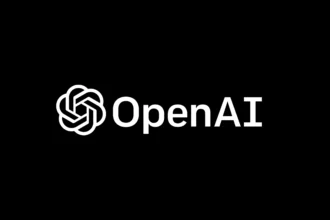Table of Contents
ToggleDoes OpenAI API have limits?
Yes, all API usage is subject to rate limits. Whether you’re a large enterprise looking to integrate cutting-edge AI tools or a small startup trying to add some intelligence to your app, understanding the limitations of the OpenAI API is crucial for seamless integration. In this article, we will explore the various facets of the OpenAI API limits, how they affect your usage, and the steps you can take if you find yourself hitting those limits too often. So, grab a cup of coffee, and let’s dive into the nitty-gritty!
Understanding Rate Limits
First things first—what exactly are rate limits? Simply put, rate limits are restrictions placed on the number of requests you can make to the OpenAI API in a given time frame. These limits exist to ensure fair usage among all users and to protect the OpenAI servers from being overloaded. Think of it as a traffic signal; just because you want to zoom ahead doesn’t mean you can rush through a red light, right? Every user must play by the rules.
OpenAI sets these limits based on several factors, including the type of API plan you’re on and the specific endpoint you’re using. For instance, if you’re using the popular GPT-3 model for natural language processing tasks, the limits can be different than if you’re using an image generation model. Generally speaking, the rates are specified in requests per minute or tokens processed. It’s paramount to keep this in mind as you develop your applications.
Types of Rate Limits
OpenAI employs a tiered system when it comes to rate limits. Let’s break down the main categories you might encounter:
- Free Tier: If you’re just getting started, you might be on a free tier. In this case, you’ll have access to limited requests and performance.
- Paid Tiers: Depending on your needs, you can opt for various paid plans that grant you higher request limits and access to advanced features.
- Custom Plans: For businesses with heavy usage requirements, OpenAI offers the possibility of creating custom plans. This means you can potentially negotiate higher limits tailored to your organization.
To keep track of your API usage, OpenAI provides a dashboard where you can monitor your rate limits in real-time. By visiting the API settings, you can stay informed about how close you are to hitting those caps.
Why Limitations Matter
Now that we understand what rate limits are, you may wonder: why do these limitations even matter? Besides ensuring system stability, rate limits help in various critical situations:
- Prevent Abuse: Limiting the number of requests can prevent a single user from hogging all resources, allowing for a more equitable distribution among all users.
- Optimize Costs: Surpassing your limits may lead to unexpected costs if you’re on a paid plan that charges you per extra request. Awareness of your limits helps keep expenses in check.
- Improve Performance: By enforcing limits, the server can maintain a lower latency, allowing all users to have a smoother experience rather than one person’s excessive usage creating bottlenecks.
When You Hit Your Limits
It can be frustrating to hit rate limits, especially when you’re deep into development or when your application starts gaining traction. So, what should you do if you find yourself in this sticky situation? Here are some tips:
- Check Your Rate Limit Status: Always keep an eye on the dashboard for your current usage stats. This will give you a clear picture of how much you can still use.
- Optimize Your Requests: If you notice you’re nearing your limits, consider optimizing your API requests. Batch your requests where feasible to make full use of your limits without exceeding them.
- Adjust Your Application Logic: You might also want to implement a queue system in your application. This way, you can manage your requests effectively without bombarding the server.
Applying for Increased Limits
If you find that you’re consistently hitting your rate limits, it might be time to consider applying for an increase. The good news is that OpenAI provides an option to request higher limits. Here’s how:
- Visit Your Settings: Go to your OpenAI dashboard and click on the settings tab.
- Locate the Limits Page: In the settings, you’ll find a dedicated page for limits where your current usage is displayed.
- Apply for an Increase: At the bottom of this page, you’ll find an option to apply for an increase. Make sure to provide detailed information about why you need higher limits and how you plan to use the additional capacity.
Keep in mind that approval isn’t guaranteed; OpenAI will assess your request based on various factors, including usage patterns and your overall application impact on their ecosystem.
Conclusion
Understanding the limits of the OpenAI API is essential for any developer looking to successfully integrate this technology into their projects. While hitting rate limits can feel like a roadblock, it’s crucial to recognize these limitations as part of a broader system designed to maintain fairness and performance for all users. Just remember, it’s like the imaginary line drawn at a race—every runner must stay behind it until the starting gun goes off.
From managing how much you query the API to optimizing your usage or even applying for an increase, there are myriad ways to navigate the waters of operational limits. Doing your homework and understanding the structures in place can enable your application to flourish without unnecessary bumps in the road. So the next time you think about tapping into the expansive universe of AI, ensure that you’re equipped with the right knowledge about those limits. Happy coding!


